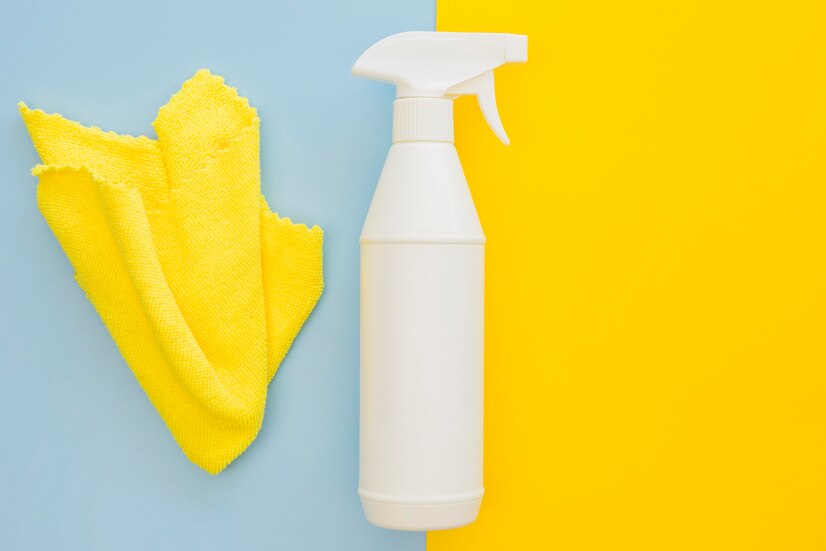A carpet is a floor covering with a rigid backing and an upper layer of wool or synthetic pile. Wool was historically valuable for making the pile. Still, since the 20th century, synthetic fibres like nylon, polyester, or polypropylene have been frequently used because they are more inexpensive than wool. Rugs are typically believed to be loose on the floor and smaller than rooms.
Carpets serve several functions, such as protecting a person’s feet from a cold tile or concrete floor and making a space more comfortable to sit on the floor. With the use of variously coloured fibres, carpets are available in any colour. There is a wide variety of patterns and themes that embellishes carpets.
However the carpet is, it requires a lot of care occasionally. If you are looking for carpet cleaning products, get them from us at a fair price. Everywhere they are used, they improve the attractiveness of the interiors.

How Are Carpets Made?
The process of making carpets on a loom is very similar to that of weaving fabric. The carpets are usually made of needle felts, knotted by hand (as in oriental rugs), tufted, flatwoven, or by hooking wool or cotton through the meshes of a sturdy fabric.
In the US and Europe, respectively, carpet is frequently produced in widths of 12 feet and 15 feet and 4 meters and 5 meters. Ever since the 19th and 20th centuries, when essential for wall-to-wall carpeting, different widths of carpet can be sewn together with a seaming iron and seam tape and attached to a floor over a cushioned underlay with nails, tack strips, glues, or every once in a while decorative metal stair rods. Once your carpets are carefully set. Contact us to avail carpet cleaning suppliers.
Rugs or mats, loosely put floor decorations, differ from wall-to-wall carpets since they are fastened to the flooring and cover a substantially more extensive area.
Types of carpets
- Woven
They assemble the carpet on a loom that is similar to the one used to weave fabric. The pile may be Berber or plush. Cut and loop carpeting is a new type of carpet that combines the two designs. This approach, which often uses a variety of coloured yarns, can be utilized to create complicated patterns from specified designs. Due to the slow manufacturing process, these carpets are typically the most expensive.
- Felt
The technology behind needle-felt rugs is more modern. These carpets are made by felting separate synthetic strands together with barbed and forked needles to make a durable carpet. These carpets are mostly set up in public places like hotels and restaurants.
Knotted
Knotted Oriental rugs and carpets are the most common items to have hand knotting. Pile carpets are knit on loom-like flat carpets. Both horizontal and vertical looms are used to create European and Oriental carpets. Before weaving begins, the warp strands lay on the loom’s frame. On one carpet, several weavers might collaborate. In woven carpet, the weft is often jute, and the warp is typically cotton.
To add stability, these carpets have their pile injected into a backing material attached to a secondary backing composed of a woven hessian weave or a synthetic substitute. This one is the world’s most popular method for producing home carpets for use as floor covering.
Care Instructions For Carpets
- Taking Off Shoes
It can be challenging to keep shoes off, but doing so can save your carpet. Shoes are far dirtier and messier than bare feet and much harsher on the carpet.
- Cleaning Up Frequently
Despite your best efforts to keep the carpet out of your home, it tends to accumulate dust and debris. Vacuuming frequently is an effective way to keep dust and debris off your carpet.
- Cleaning Spills Quickly
The simpler it will be to clean up a spill, and the more likely it is that it ends in elimination, the faster you respond to a spill. Here is a summary of some crucial pointers for effectively cleaning up spills.
- Positioning Furniture
The longer you leave furniture in one spot, the more weight it will contribute to your carpet. Occasionally rearrange your furniture to prevent weight stains from fading your carpet.
- Stretch it out
By stretching it out, you can extend the life of your carpet and make it appear as though it was just put. Call a professional if you think your carpet needs a good stretch.
How To Naturally Clean Your Carpets?
- Vapour of steam
Using plain water to clean things is the simplest and most direct application. There are no dangerous chemical reactions or accidental consumption to worry about.
If steam doesn’t do it, then steam cleaning machine hire are available at our store. Buy now to clean your carpets.
- Salt, vinegar, and water
Buy a spray bottle, fill it with two parts water to one vinegar solution. (For example, you need half a cup of vinegar for every cup of water.) Add a teaspoon of salt to every cup of water. Once the water and vinegar combine in the spray bottle. Spray directly to get rid of the stain.
- Vinegar, Baking Soda, and Water
Cover the stain with baking soda. If you want to increase the deodorizing power even more, you can add a few drops of essential oil that are colourless. At least an hour should pass while the baking soda is left on top of the stain. Spray the vinegar and water combination over the baking soda after combining them in equal amounts. You ought to get a pleasant fizzing effect. Blot the stain up by patting the surface with a cleaning rag.
Why Are Carpets Aesthetically Pleasing?
A rug alters the room’s focal point, provides a visual barrier, and fosters a cosier, friendlier ambience. Rugs give a room a polished, finished look. Carpet-related health and environmental issues include indoor air quality, chemical emissions from production and disposal processes, and effects on solid waste. A rug may drastically alter how a house feels and appears, going beyond simply finishing off the design. A rug or carpet can bring a room’s components together in perfect harmony, calm it down, or even make a strong statement. Like an accessory is to an outfit, a rug is to a room.
This is because there are infinite aesthetic variations available for them. Depending on the material, craftsmanship, colours, and graphic pattern, carpets can alter the atmosphere of a room and fill it with their scenic presence.
Conclusion
In colder climates or seasons, carpet retains warm air longer than other flooring materials. This quality conserves energy and keeps your house comfortable during the winter. A room feels cosier and offers a comfy surface on which to sit, play, or work when it has carpet. Because they provide excellent insulation to our homes and help keep heat in and cold air out, carpets have maintained a high level of appeal. They are aesthetically very pleasing indeed as long as you keep them clean. Buy a carpet cleaner detergent to wash your carpets at home. Keep them looking fresh and lush, and get compliments from your guests.


